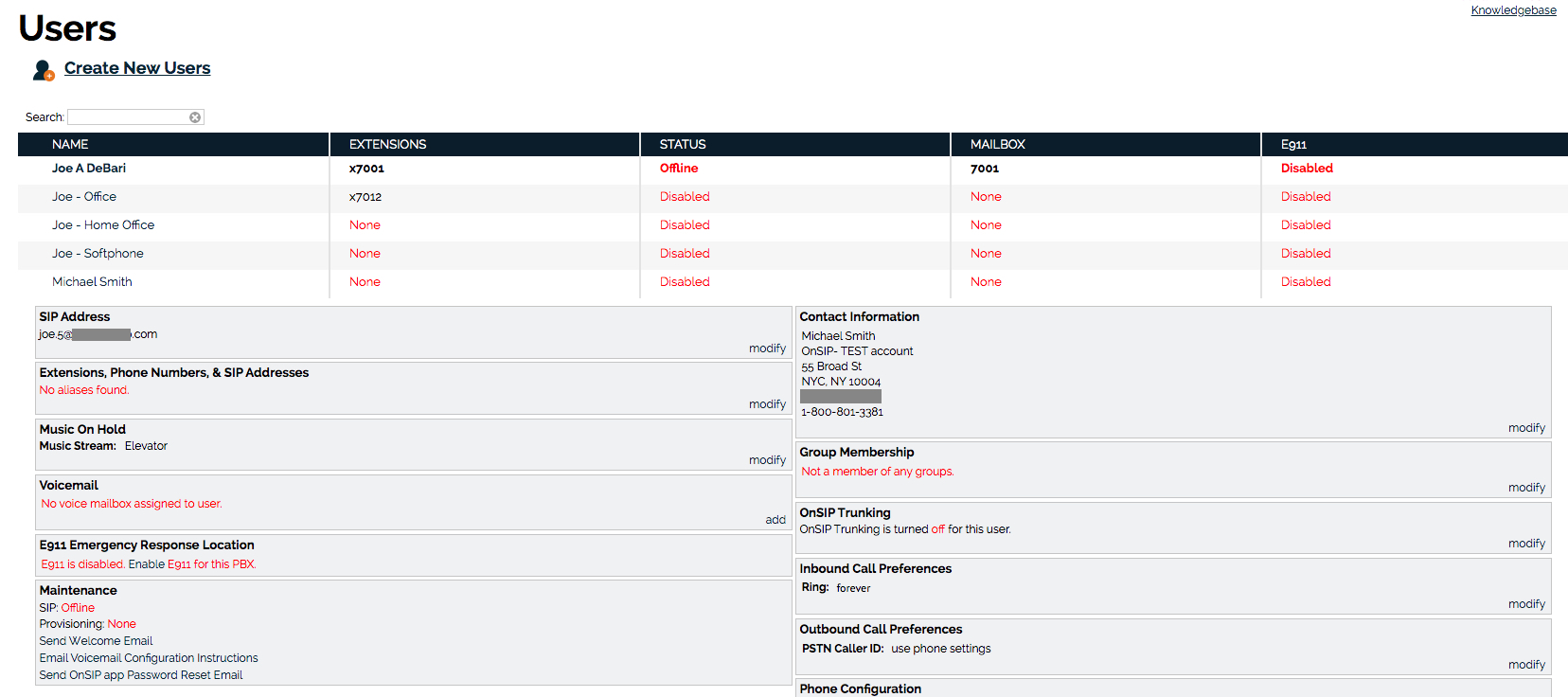
- #ONSIP MY SIP DETAILS INSTALL#
- #ONSIP MY SIP DETAILS CODE#
- #ONSIP MY SIP DETAILS PASSWORD#
- #ONSIP MY SIP DETAILS FREE#
This guide will only work with audio calls, Asterisk will reject video calls.

If you used a self signed certificate in the earlier steps, you will need to navigate to and add the certificate exception. Restart Asterisk using service asterisk restart to ensure that the new settings take effect. nfĮxten => 1060,1,Dial(SIP/1060) Dialing 1060 will call the SIP client registered to 1060Įxten => 1061,1,Dial(SIP/1061) Dialing 1061 will call the SIP client registered to 1061 Lastly, set up nf to allow the two peers to call each other. Rtcp_mux=yes Tell Asterisk to do RTCP mux Introduced in Asterisk 11.11ĭtlsenable=yes Tell Asterisk to enable DTLS for this peerĭtlsverify=fingerprint Tell Asterisk to verify DTLS fingerprintĭtlscertfile=/etc/asterisk/keys/asterisk.pem Tell Asterisk where your DTLS cert file isĭtlssetup=actpass Tell Asterisk to use actpass SDP parameter when setting up DTLS Transport=udp,ws,wss Asterisk will allow this peer to register on UDP or WebSocketsįorce_avp=yes Force Asterisk to use avp. Icesupport=yes Tell Asterisk to use ICE for this peerĬontext=default Tell Asterisk which context to use when this peer is dialingĭirectmedia=no Asterisk will relay media for this peer
#ONSIP MY SIP DETAILS PASSWORD#
Secret=password The SIP Password for SIP.jsĮncryption=yes Tell Asterisk to use encryption for this peerĪvpf=yes Tell Asterisk to use AVPF for this peer Udpbindaddr=127.0.0.1 Replace this with your IP address Realm=127.0.0.1 Replace this with your IP address All of these config lines should be under the peer itself setting these config lines globally might not work. Also under the WebRTC client, the transport needs to be listed as ‘ws’ to allow websocket connections. In most cases, directmedia should be disabled. The WebRTC peer requires encryption, avpf, and icesupport to be enabled. Here you will set up two peers, one for a WebRTC client and one for a non-WebRTC SIP client. Tlscertfile=/etc/asterisk/keys/asterisk.pemĬhange the IP address and port to the IP address of your server and the port that you would like Asterisk to listen for web socket connections on. Tlsbindaddr=127.0.0.1:8089 Replace this with your IP address Start by editing nf and make sure that the following lines are uncommented: nfīindaddr=127.0.0.1 Replace this with your IP addressīindport=8088 Replace this with the port you want to listen on

The global settings do not flow down into the peer settings very well.īy default, Asterisk config files are located in /etc/asterisk/. ast_tls_cert -C -O "My Super Company" -d /etc/asterisk/keys.įor WebRTC, a lot of the settings that are needed MUST be in the peer settings.
#ONSIP MY SIP DETAILS FREE#
Let’s Encrypt is a great way to get a free certificate.
#ONSIP MY SIP DETAILS INSTALL#
If you need to install the Asterisk startup script you can run make config.Ī self signed SSL certificate is acceptable for development, but it will not work in a production environment.

#ONSIP MY SIP DETAILS CODE#
SIP.js has been tested with Asterisk 16.9.0 without any modification to the source code of SIP.js or Asterisk. Try SIP.js and OnSIP - a perfect pairing for WebRTC! Configure Asterisk


 0 kommentar(er)
0 kommentar(er)
